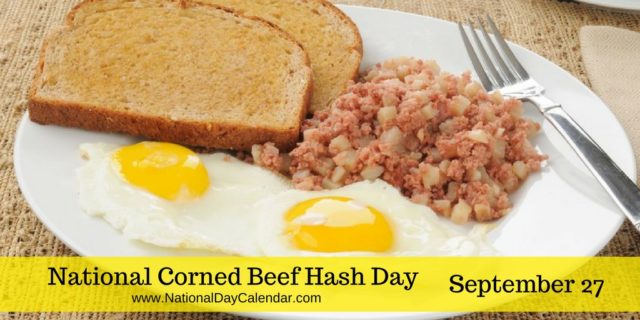
National Corned Beef Hash Day is observed annually on September 27.
Making corned beef hash is a great way to use up leftovers. Corned beef hash became popular during and after World War II as rationing limited the availability of fresh meat.
- The Hormel Company claims it introduced corned beef hash and roast beef hash to the United States as early as 1950.
- “Hash” of many forms has been part of the American diet since at least the 19th century, as is attested to by the availability of numerous recipes and the existence of many “hash houses” named after the dish.
- The term “hash” is derived from the French word “hacher” which means “to chop”. Hash consists of chopped or diced meat, potatoes, and spices. corned beef gets its name from the treatment of meat with “corns” of salt, because the salt halts the growth of bacteria by taking out moisture.
- Corned beef hash became popular because during and immediately after WWII when fresh meat was rationed while corned meat was more available.
- The term “Corned” comes from putting meat in a large crock and covering it with large rock-salt kernels of salt that were referred to as “corns of salt” This preserved the meat. The term Corned has been in the Oxford English Dictionary as early as 888 AD.
- Abraham Lincoln’s inaugural dinner was corned beef and cabbage.
- Corned beef is not considered an Irish national dish, and the connection with Saint Patrick’s Day specifically originates as part of Irish-American culture.
- “Corned” refers to the size of the salt used to cure the beef.
- It is considered a spring dish because it used to be cured over the winter.
- Pastrami is really corned beef that is smoked.
- The First Mention of “Corned Beef” goes back to an English Book by Richard Burton in 1621, Anatomy of Melancholy…Beef ..corned young of an ox.
This video is listed on YouTube as “Bizarre 1950s TV Ad for Corned Beef Hash!” It was posted by lstash.
Sources:












